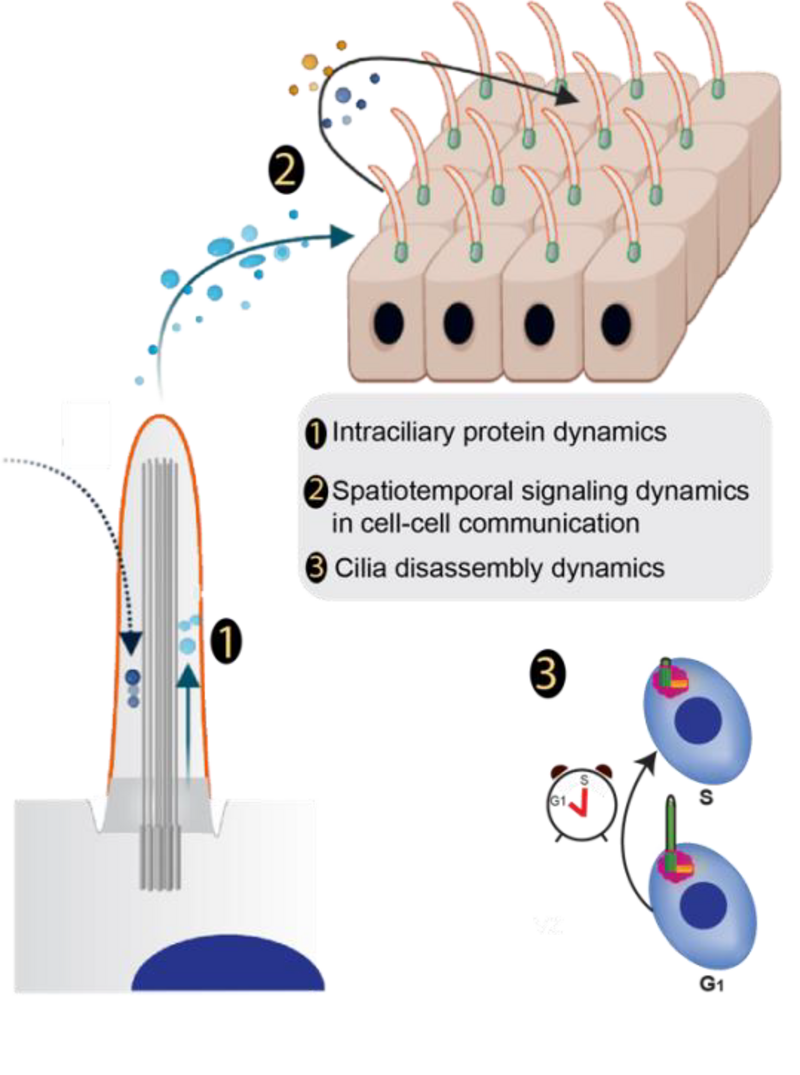The members of the Cluster of Excellence Physics of Life (PoL), Prof. Dr. Benjamin Friedrich and Associate Member Dr. Anne Grapin-Botton, who serves as the Director of the Max Planck Institute of Molecular Cell Biology and Genetics (MPI-CBG), are part of the newly funded DFG research group, announced on September 22nd: "Deciphering the role of primary cilia dynamics in tissue organization and function". This team consists of 12 outstanding scientists scattered across Germany, led by Prof. Dr. Jay Gopalakrishnan from Heinrich-Heine-Universität Düsseldorf and Prof. Dr. Dagmar Wachten from Rheinische Friedrich-Wilhelms-Universität Bonn.
How do cells assemble into tissues and maintain them? This is what the research group “Deciphering the role of primary cilia dynamics in tissue organization and function” wants to find out. The scientists are focusing on the primary cilia–cell components that protrude from the surface of cells and sense and transmit signals. They play a central role in the development and organization of tissues in healthy and diseased states. In order to get to the bottom of how they work, the research group brings together experts from cell and developmental biology, biophysics and chemistry, and medicine. Together they examine cilia in different cell types using different methods and models.
Securing funding for up to eight years, this initiative empowers scientists to delve into pressing questions within their respective fields while fostering innovation in their work.
